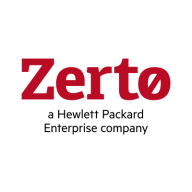

HPE Zerto Software and NetApp Cloud Volumes Service for Google Cloud compete in cloud data management and disaster recovery. NetApp Cloud Volumes Service for Google Cloud seems to have the upper hand due to its comprehensive feature set and perceived value for the price.
Features: HPE Zerto Software offers robust data recovery, flexible disaster recovery solutions, and strong support. NetApp Cloud Volumes Service for Google Cloud provides scalable storage solutions, integrated analytics capabilities, and comprehensive cloud data management.
Ease of Deployment and Customer Service: HPE Zerto Software's straightforward deployment process and strong customer support make it attractive for quick implementation. NetApp Cloud Volumes Service for Google Cloud integrates seamlessly with Google Cloud, though service levels are less personalized than Zerto's.
Pricing and ROI: HPE Zerto Software has competitive pricing and effective ROI, particularly for disaster recovery-focused businesses. NetApp Cloud Volumes Service for Google Cloud is perceived as more expensive but delivers high ROI through efficient data management and scalability, justifying the investment for many enterprises.

Zerto is used for disaster recovery, business continuity, data migration, and ransomware recovery, providing continuous data protection and near real-time replication. Valued for ease of use, efficient failover processes, and versatile integration, it enhances organizational efficiency, reduces errors, and boosts productivity.
NetApp® Cloud Volumes for Google Cloud is a fully managed or self-managed file service that is integrated into Google Cloud with the multiprotocol support, performance, and availability required to run business-critical applications. It is designed to provide massively parallel shared access to thousands of Google Compute Engine and Google Kubernetes Engine instances, enabling your applications to achieve high levels of aggregate throughput and IOPS with consistent low latencies.
Use cases. Customers can use the service to migrate existing enterprise applications to Google Cloud. Other use cases include hybrid deployments, multicloud mobility, big data analytics, web serving and content management, application development and testing, media and entertainment workflows, database backups, container storage, and more.
Features. Multiple performance tiers, standard file interfaces, advanced data management, metered service, fully managed service, native service experience, integrated support, and integrated billing.
For more information:
NetApp: https://cloud.netapp.com/cloud-volumes-service-for-gcp
Google: https://cloud.google.com/netapp
We monitor all Cloud Migration reviews to prevent fraudulent reviews and keep review quality high. We do not post reviews by company employees or direct competitors. We validate each review for authenticity via cross-reference with LinkedIn, and personal follow-up with the reviewer when necessary.